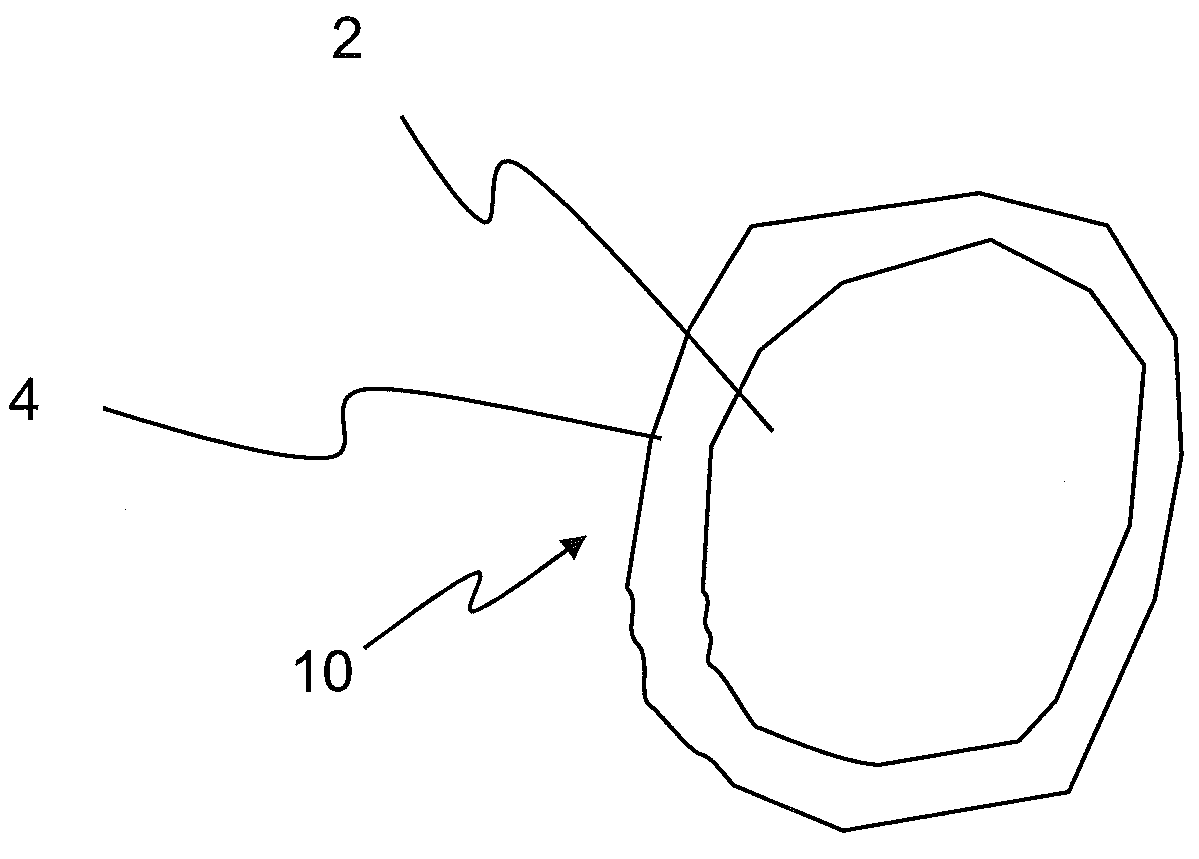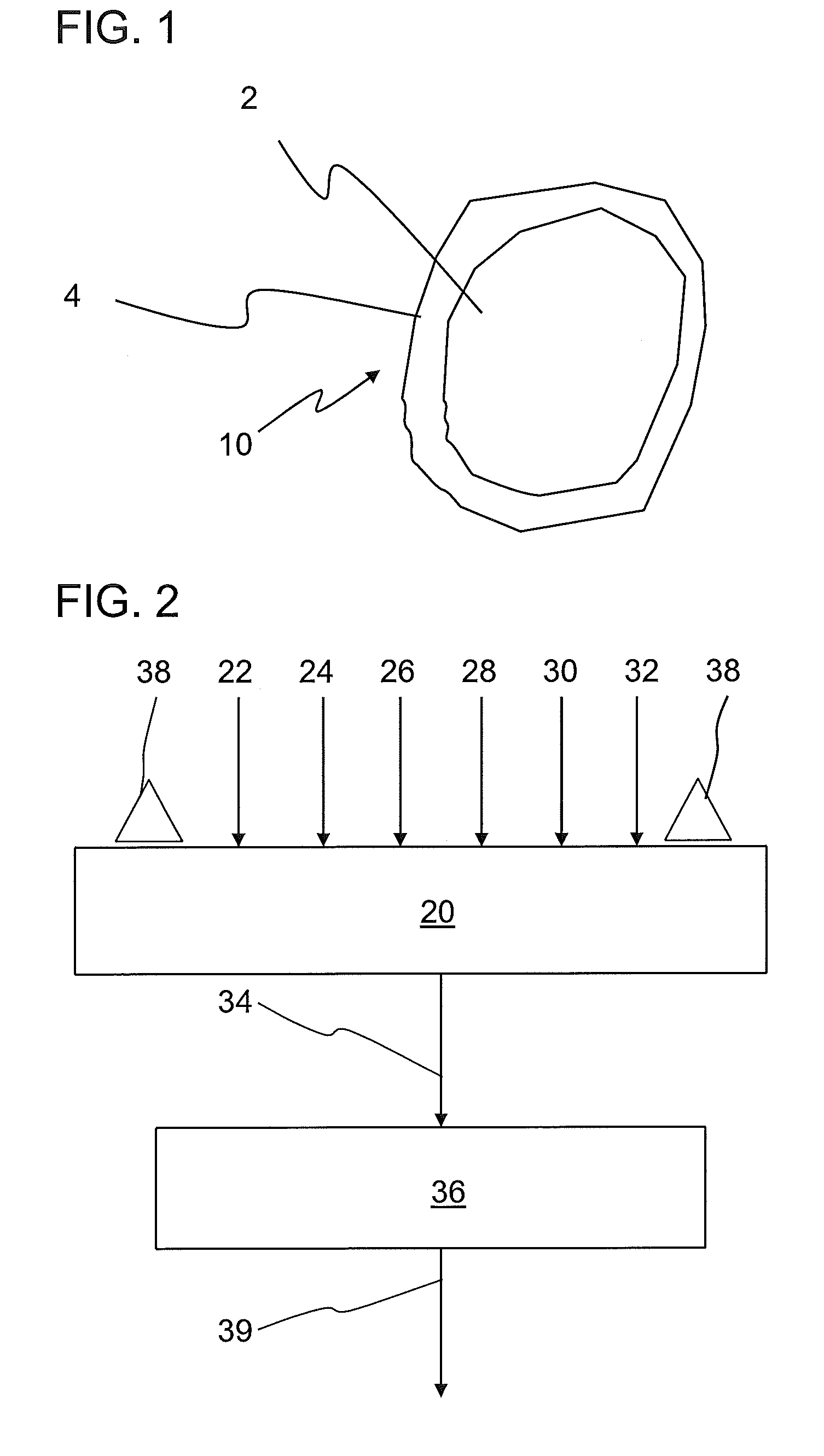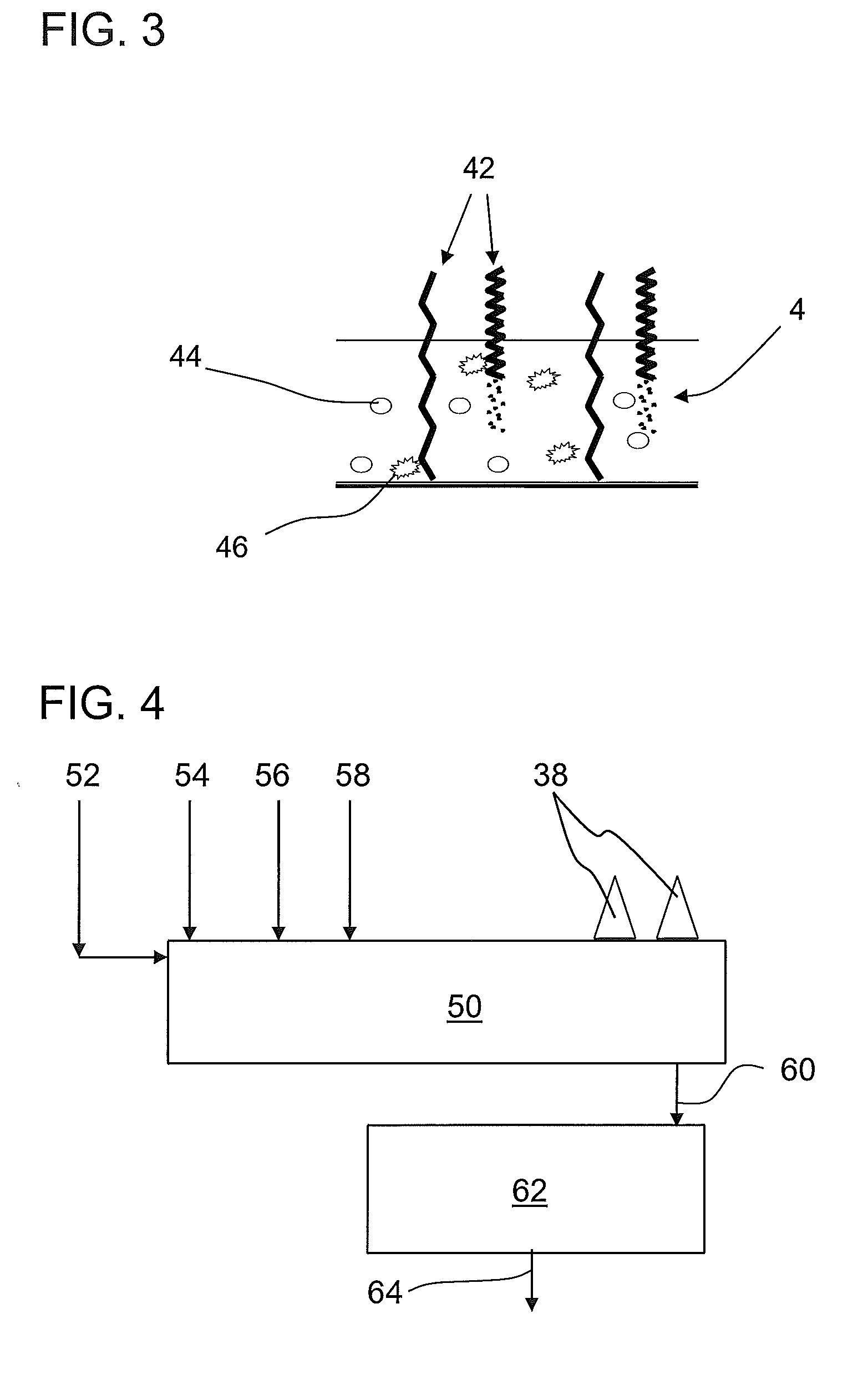Methods for making and using UV/EB cured precured particles for use as proppants
a technology of precured particles and proppants, which is applied in the direction of cellulosic plastic layered products, natural mineral layered products, and well accessories, etc., can solve the problems of high production cost, high production cost, and relatively low strength of sintered ceramic particles, so as to reduce production costs and reduce production costs. , the effect of minimizing costs
- Summary
- Abstract
- Description
- Claims
- Application Information
AI Technical Summary
Benefits of technology
Problems solved by technology
Method used
Image
Examples
example 1
[0240]A brief overview of the batch coating cycle:
[0241]1. to the batch mixer is added 1000 grams of 20 / 40 mesh sand particles at room temperature;
[0242]2. the agitator is started;
[0243]3. 40 grams of liquid epoxy (EPON 828) and 2 gram of photo-initiator (CHIVACURE 1190) are added and the timer is started, (0 min.:00 sec.);
[0244]4. an UV lamp with adequate power is turned on (1 min.:00 sec.), the mixture is exposed to the UV light and the liquid resin coating is being cured under UV;
[0245]5. when the timer is at 6 minutes:00 seconds, the sand mass is free flowing upon agitation and is then removed from the mixer.
[0246]The resulting product had an LOI (Loss on Ignition) of 4 by weight of sand. LOI (Loss on Ignition) represents the amount of resin on the substrate.
[0247]This product was then tested for fines generation in a crush test according to API RP-56, “Recommended Practices for Testing Sand Used in Hydraulic Fracturing Operations”, 2d edition, American Petroleum Instit...
example 2
[0248]A brief overview of the continuous coating cycle;
[0249]1. to the continuous mixer is added 500 grams of sand per minute at room temperature;
[0250]2. the continuous mixing is started (0:00);
[0251]3. 20 grams of liquid epoxy (EPON 828), 1 gram of photo-initiator (ChivaCure 1190) are added (0:00);
[0252]4. an UV lamp mounted lengthwise on top of the mixer is turned on (0:00);
[0253]5. when the timer is at 1:00 minute, the resin coated sand is discharged from the exit of the mixer and appear tack free and free flowing.
[0254]The resulting product had an LOI of 4 wt. %. This product was then tested for fines generation in a crush test according to API RP-56, “Recommended Practices for Testing Sand Used in Hydraulic Fracturing Operations”, 2d edition, American Petroleum Institute, December 1995. As measured by this test the product, at conditions of 10,000 psi at room temperature, yielded about 14% fines.
example 3
[0255]A brief overview of the coating cycle;
[0256]1. To the Hobart batch mixer is added 1000 grams of 20 / 40 mesh sand particles at room temperature;
[0257]2. 25 g EPON 828 epoxy resin, 1.25 g CHIVACURE 1190 UV light initiator and 2.5 g 1,6-hexanediol (Sigma Aldrich) are premixed prior to addition
[0258]3. At time 0 min:00 sec the liquid mixture is added to the Hobart mixer and the agitation is started
[0259]4. At time 1 min:00 sec, the UV light is turned on
[0260]5. At time 7 min:00 sec, the coated sand mass appear free flowing / tack free and is discharged from the Hobart mixer.
[0261]The resulting product had an LOI of 2.5%. This product was then tested for fines generation in a crush test according to API RP-56, “Recommended Practices for Testing Sand Used in Hydraulic Fracturing Operations”, 2d edition, American Petroleum Institute, December 1995. As measured by this test the product, at conditions of 10,000 psi at room temperature, yielded about 10% fines.
PUM
| Property | Measurement | Unit |
|---|---|---|
| temperature | aaaaa | aaaaa |
| pressure | aaaaa | aaaaa |
| sticking temperature | aaaaa | aaaaa |
Abstract
Description
Claims
Application Information
 Login to View More
Login to View More - R&D
- Intellectual Property
- Life Sciences
- Materials
- Tech Scout
- Unparalleled Data Quality
- Higher Quality Content
- 60% Fewer Hallucinations
Browse by: Latest US Patents, China's latest patents, Technical Efficacy Thesaurus, Application Domain, Technology Topic, Popular Technical Reports.
© 2025 PatSnap. All rights reserved.Legal|Privacy policy|Modern Slavery Act Transparency Statement|Sitemap|About US| Contact US: help@patsnap.com



